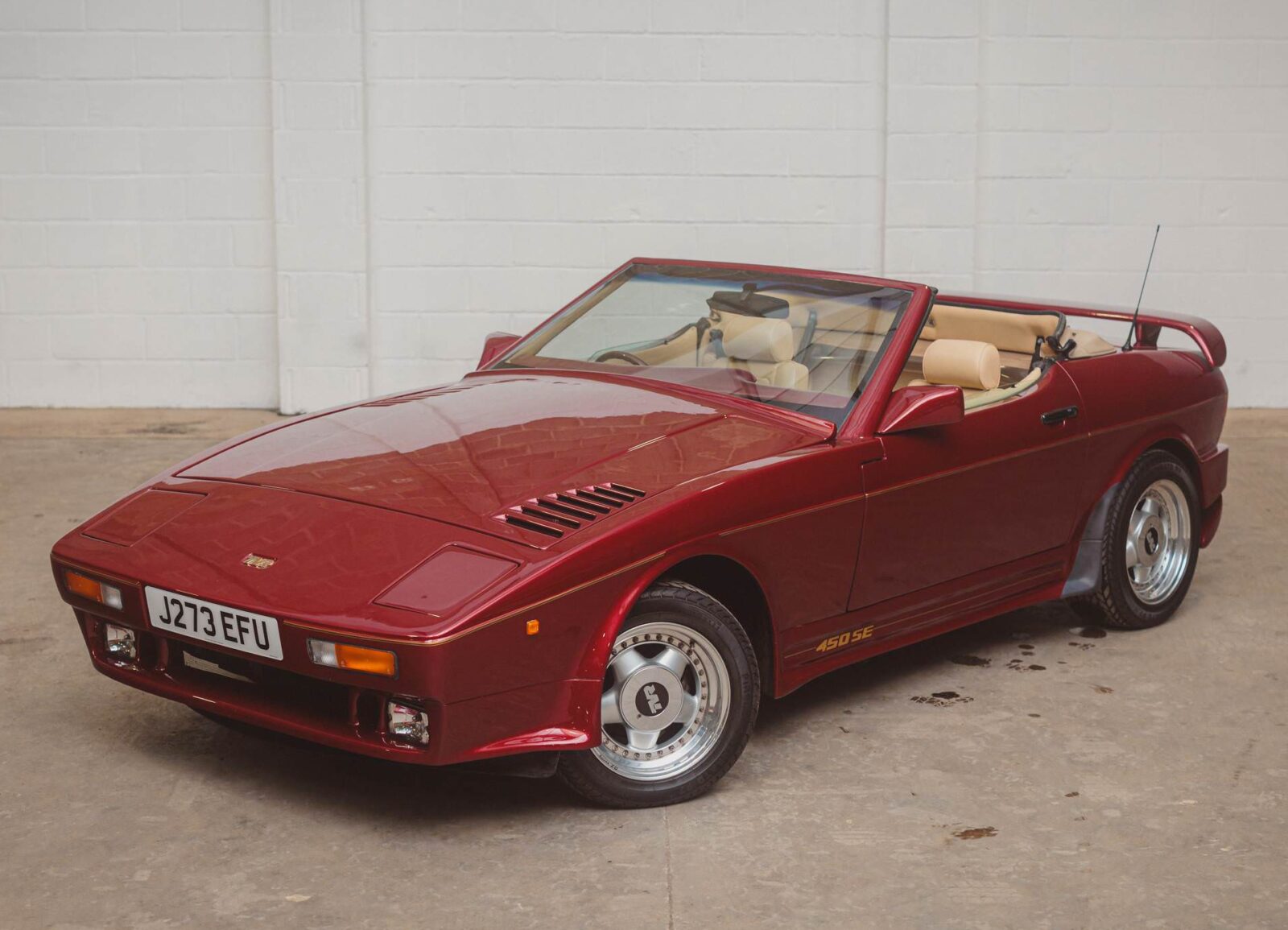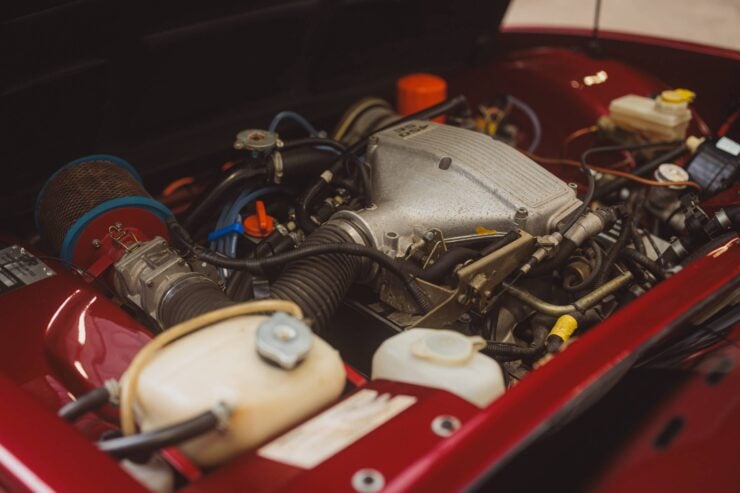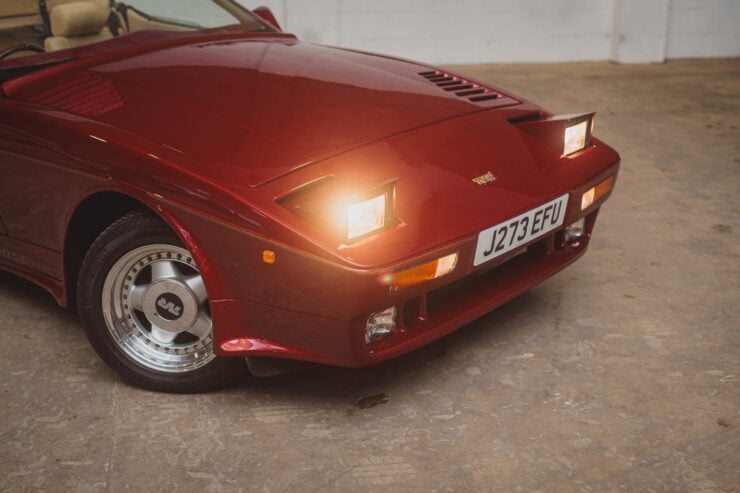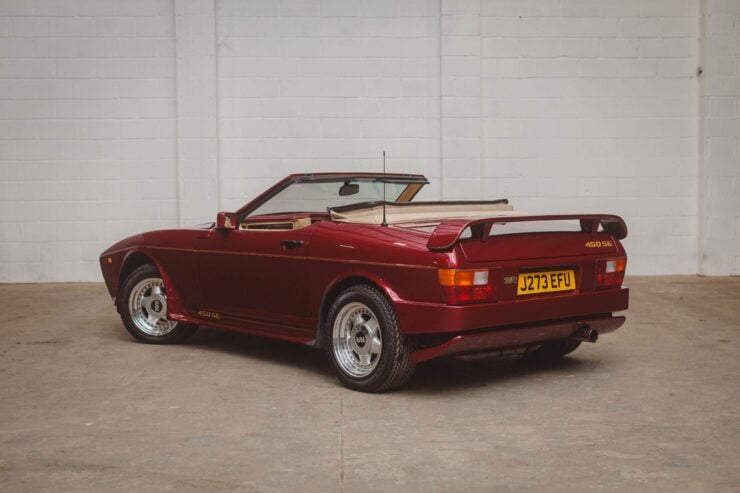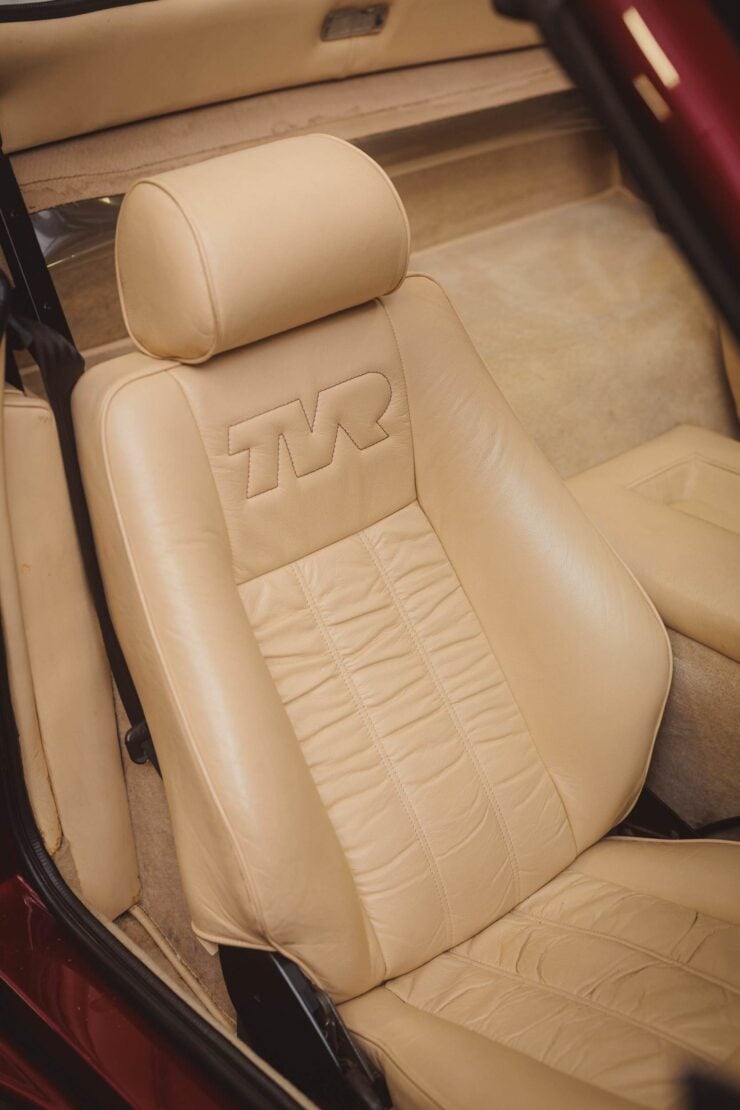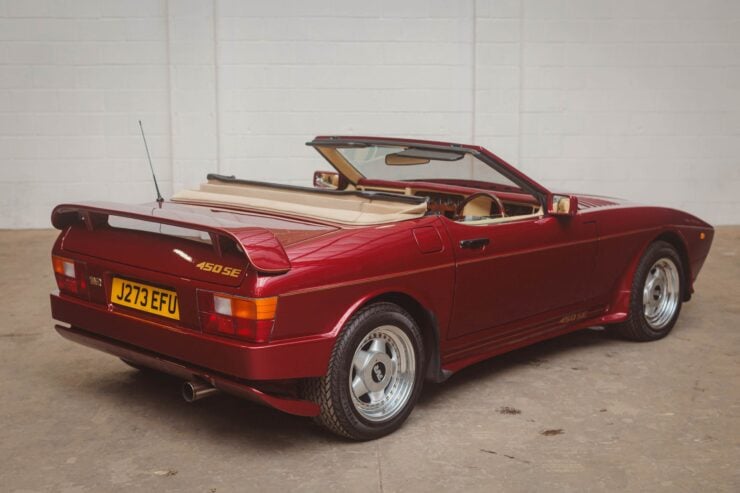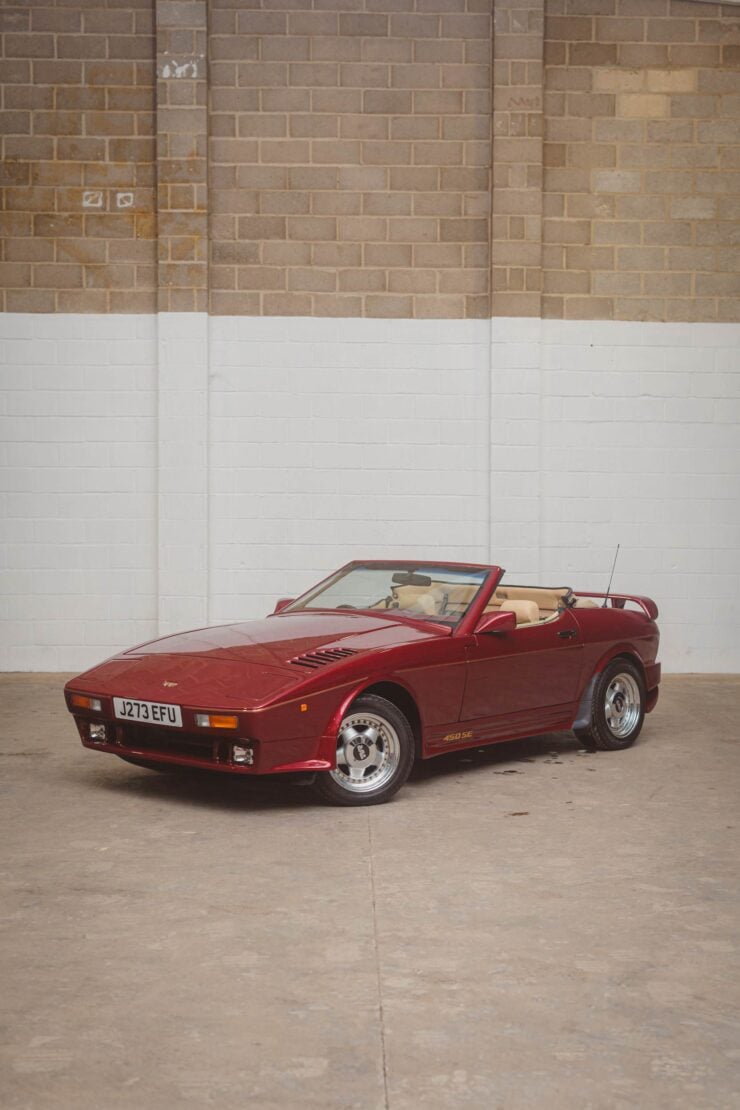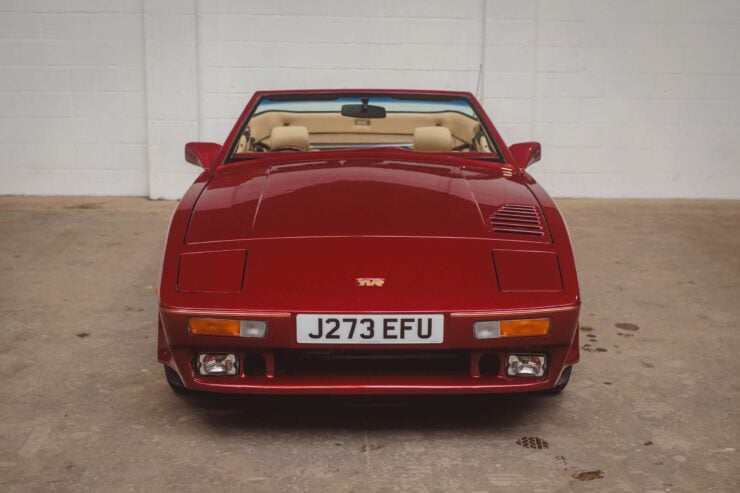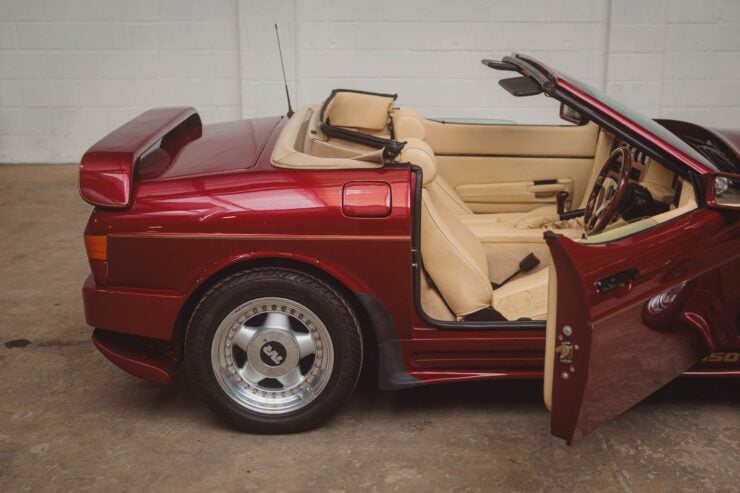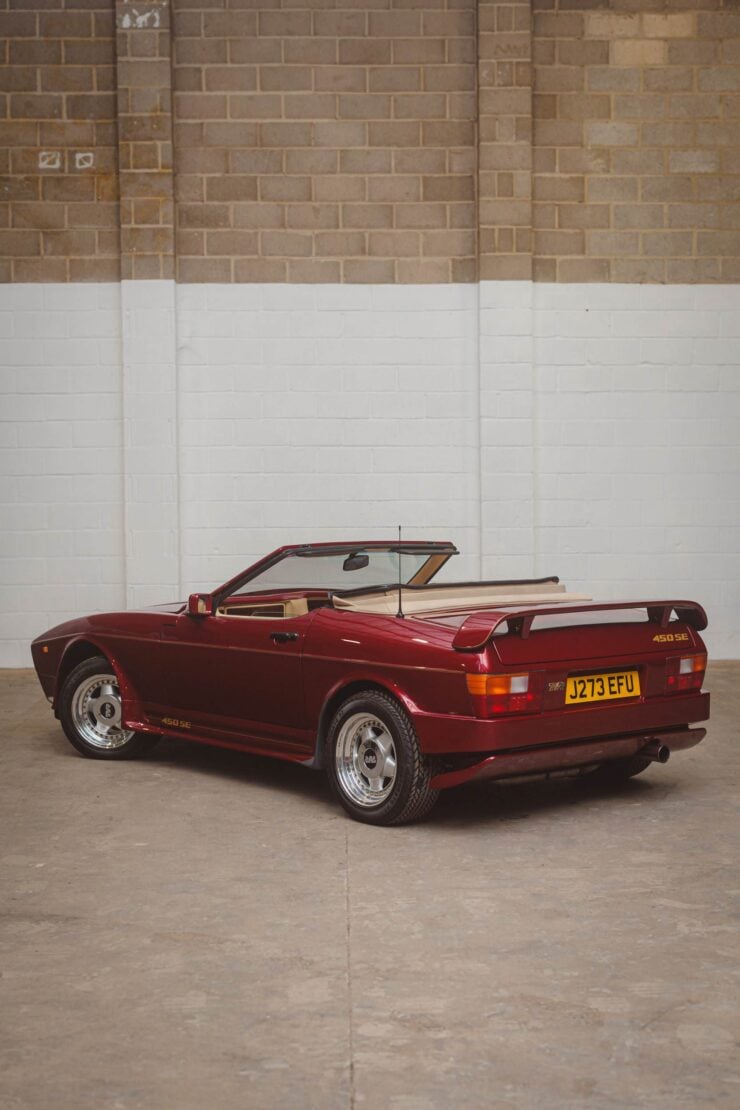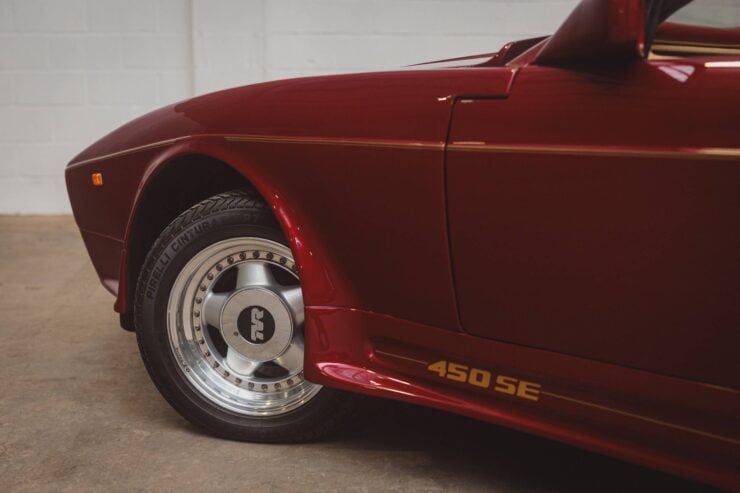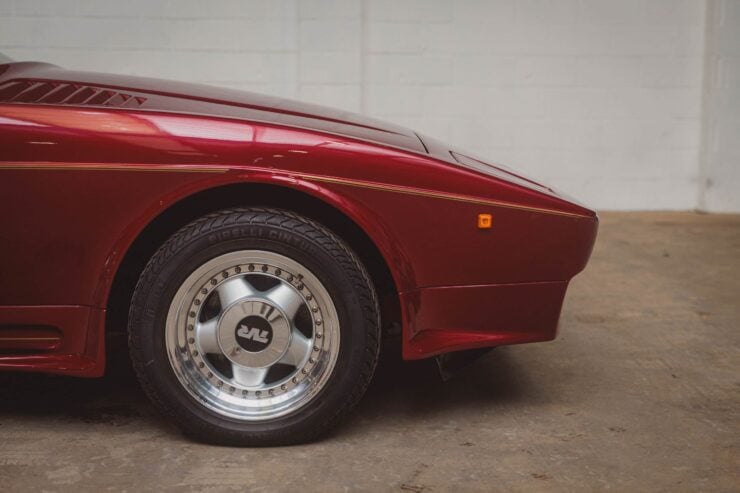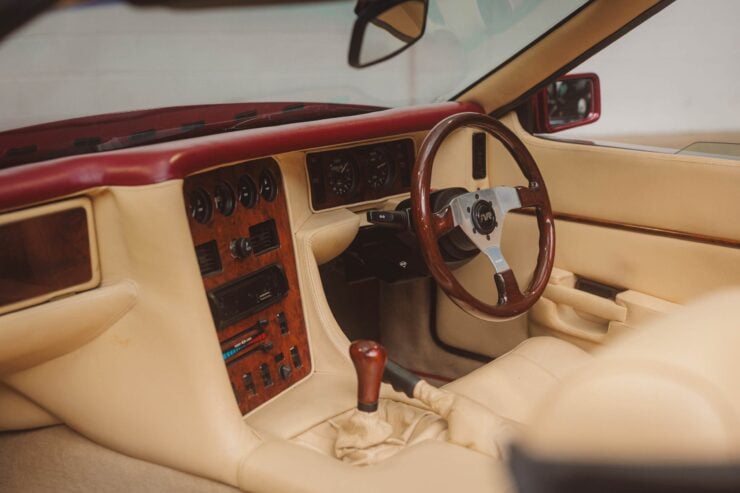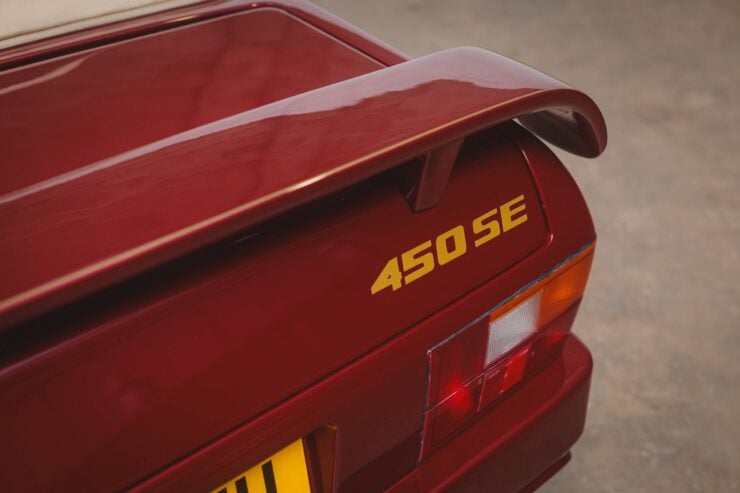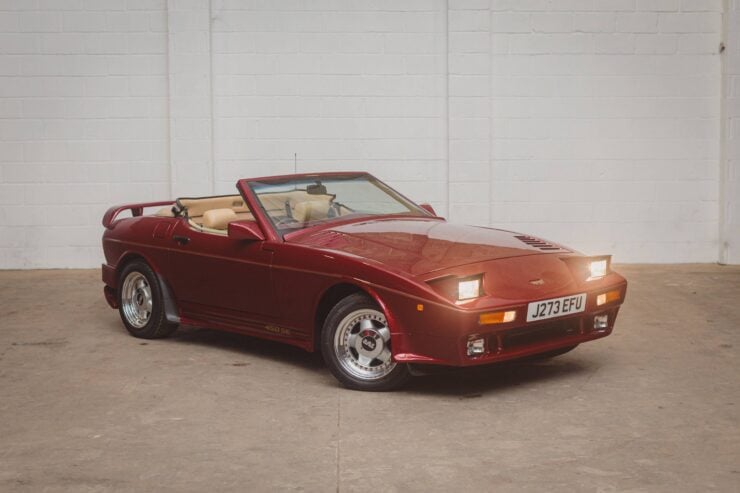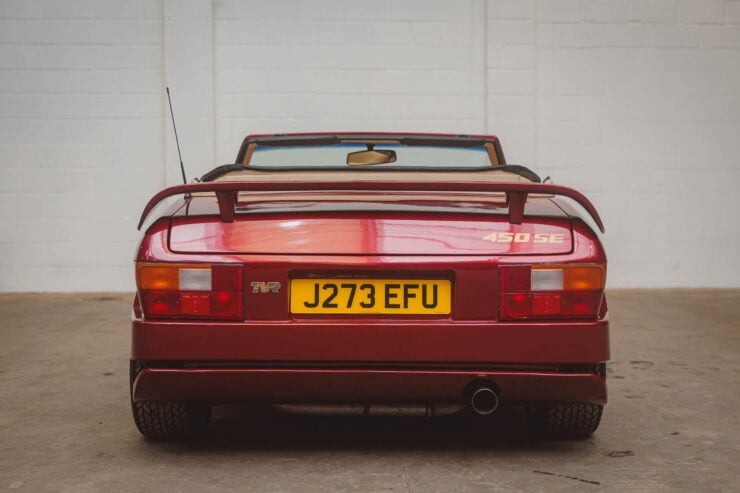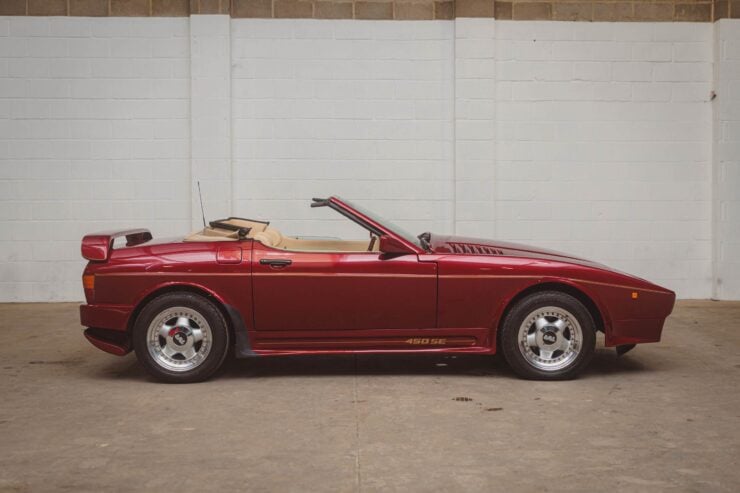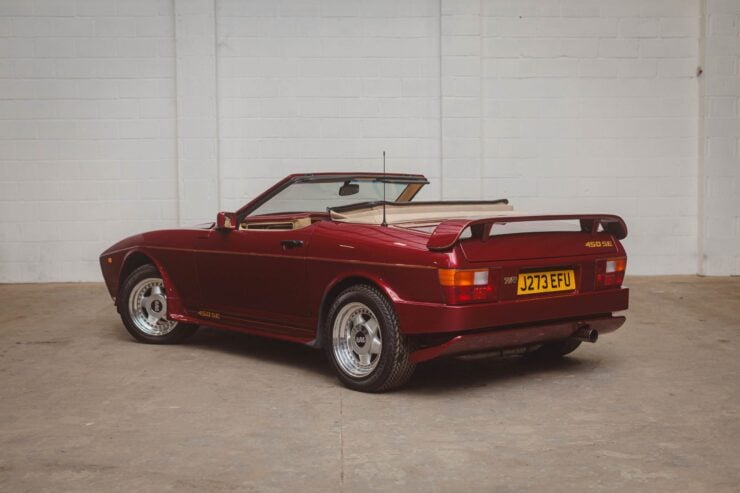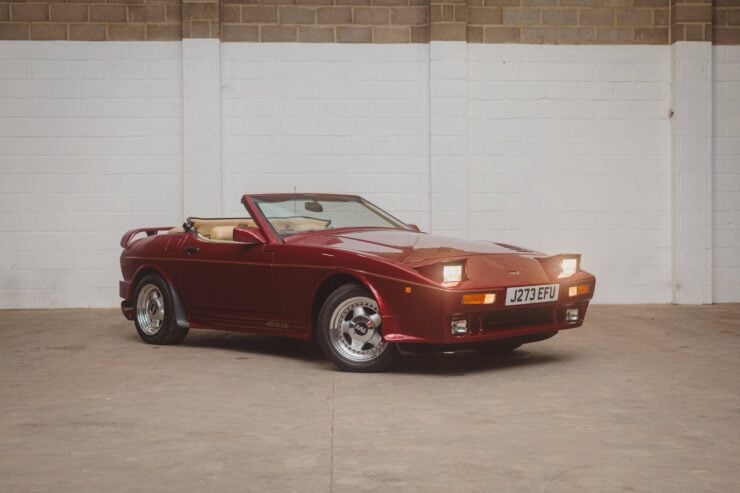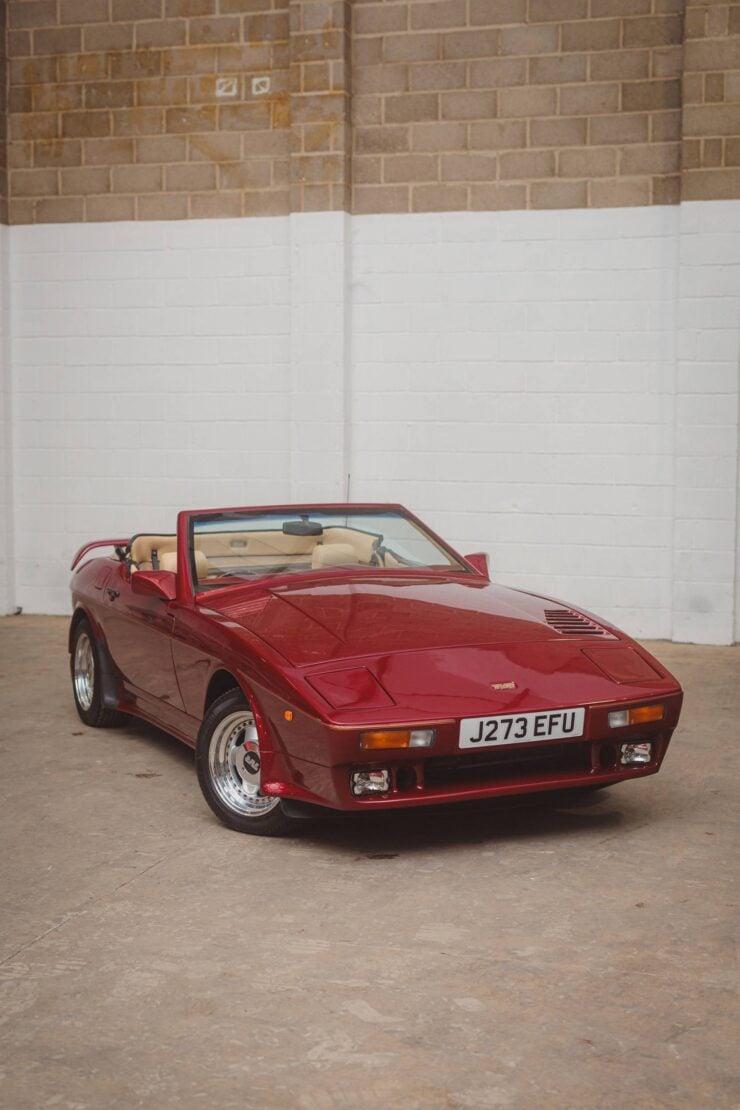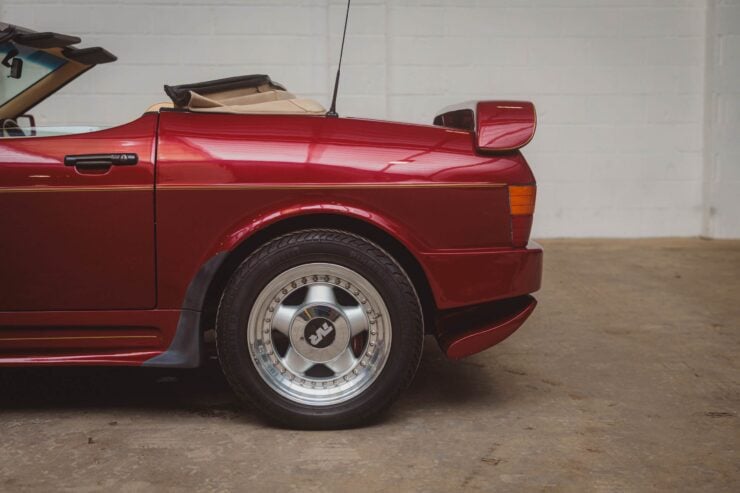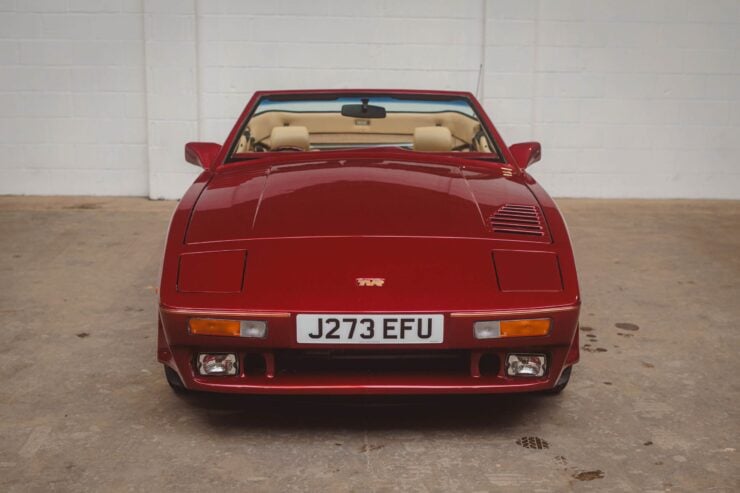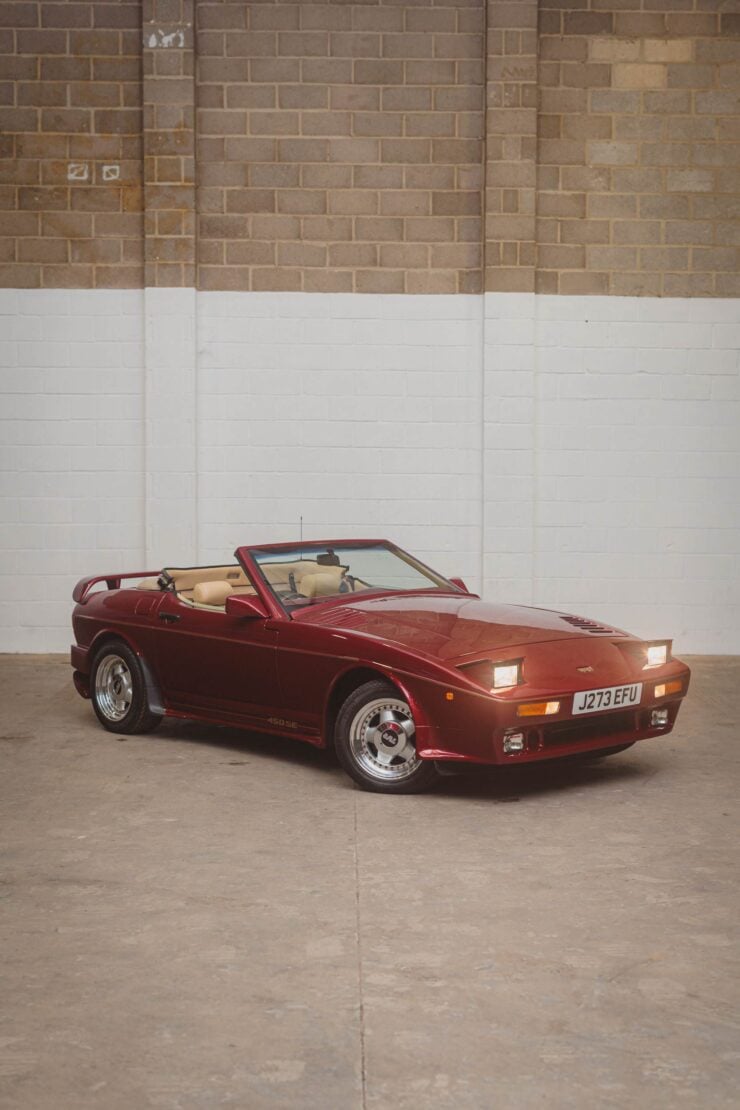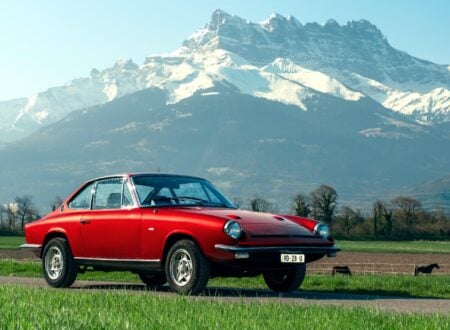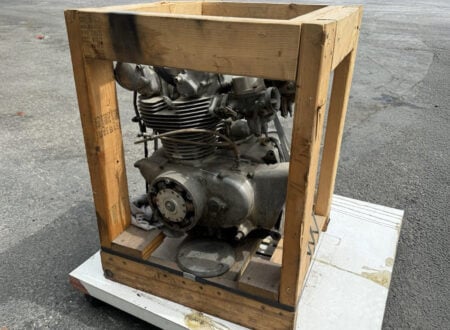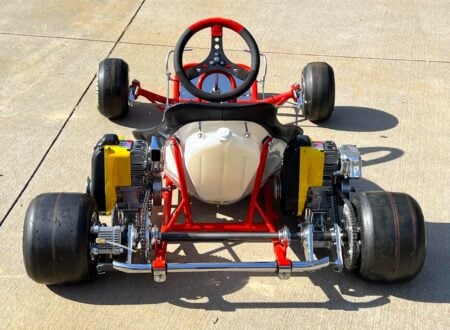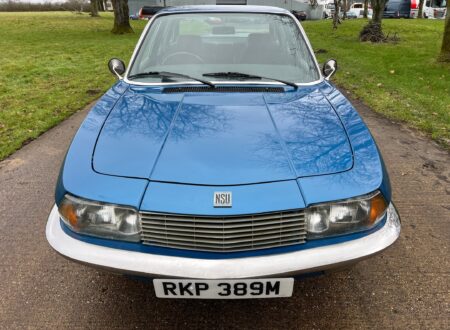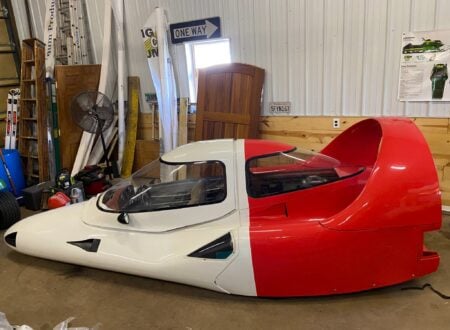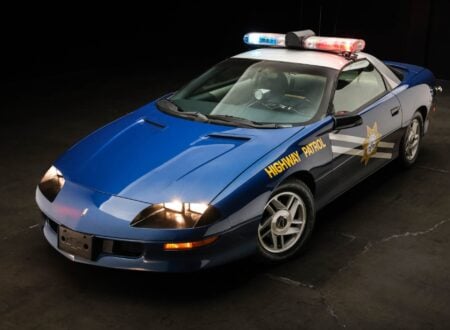This is one of just 35 examples of the TVR 450SE that were made, this would be the final model in the famed “TVR Wedge” family that had debuted back in 1980, and it would also be the most powerful.
The TVR 450SE was good for 320 bhp at 5,700 rpm and 310 lb ft of torque at 4,000 rpm. All were fitted with a 5-speed manual gearbox and they could do the 0-60 mph sprint in 4.7 seconds – with a skilled driver at the controls. Given the low production numbers and unusual history, they’re now highly sought after in TVR circles.
Fast Facts – The TVR 450SE
- The TVR 450SE, produced from 1989 to 1991, was the final and most powerful model of the TVR Wedge series. Only 35 examples were made, helping to make the surviving examples highly sought after today.
- The TVR Wedge series, launched in 1980, was inspired by the wedge car design trend of the 1960s and 1970s. These TVRs featured a tubular steel backbone chassis and fiberglass bodies, with power increasing over time. The 450SE marked the peak of performance in this iconic series before production ended.
- Powered by a 4.4 liter Rover V8, the TVR 450SE generated 320 bhp and 310 lb ft of torque, reaching a top speed of 155 mph. With only a 1,216 kg (2,681 lbs) curb weight, the car delivered impressive performance for a low-volume British manufacturer in the late 1980s.
- The TVR 450SE shown here may be the last one built, finished in Ruby Mica with gold decals, a tan roof, and a tan interior. It remains in original condition with just 10,730 miles and is now up for auction with a guide price of £25,000 – £30,000 ($33,093 – $39,711 USD).
The Arrival of the TVR Wedge
The late 1960s had seen the arrival of the “wedge car,” initially as a series of concept cars by Marcello Gandini and Giorgetto Giugiaro. They had been beaten to the punch by a young designer named Ray Cannara from Florida by a couple of years, but that’s a story for another time.
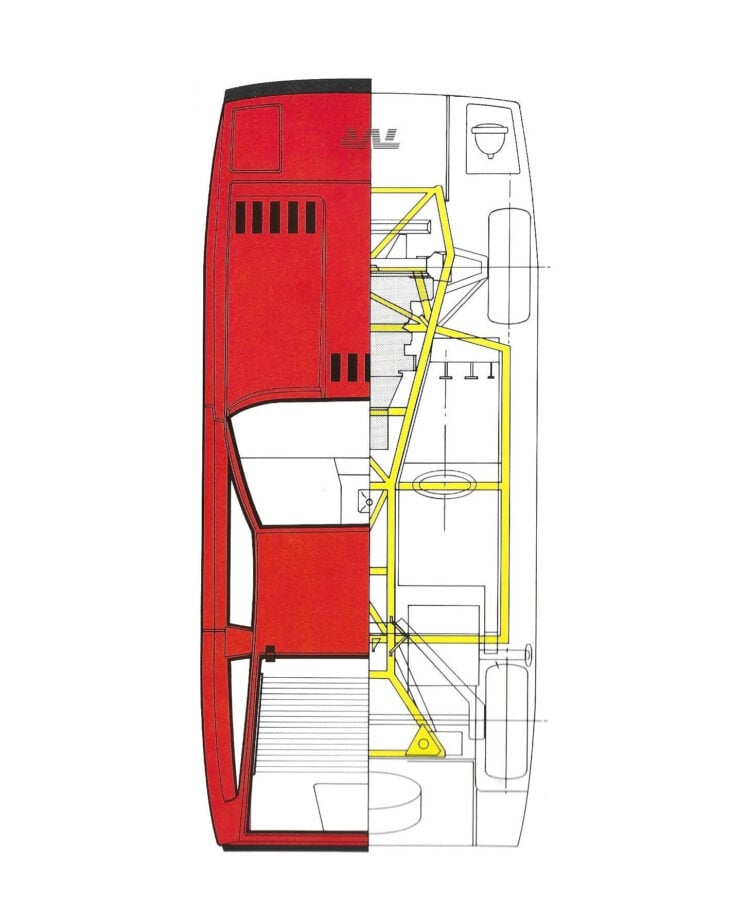 Here we see a cutaway of a TVR wedge, showing the tubular steel backbone chassis with side outriggers, front mounted engine, and the lightweight fiberglass body that goes over the top. Image courtesy of TVR.
Here we see a cutaway of a TVR wedge, showing the tubular steel backbone chassis with side outriggers, front mounted engine, and the lightweight fiberglass body that goes over the top. Image courtesy of TVR.The wedge car became an icon in the 1970s, with the release of production cars like the Lamborghini Countach, Lancia Stratos, Lotus Esprit, and DeLorean DMC-12 (to name but a few). By the late 1970s low-volume British car maker TVR had seen the writing on the wall, and the development of their first wedge-shaped car was underway.
This first TVR wedge would use a tubular steel backbone chassis, as most TVRs had for years before, but it would be clothed in an all-new, folded paper-style fiberglass wedge body. This car would be called the TVR Tasmin and it launched with a Ford “Cologne” V6 up front, and a variety of other Ford hardware including suspension and brakes.
The Tasmin sold well, which encouraged TVR to develop more of them, and to do the most TVR thing they could do, which was continually make them faster and more powerful until the very limits of Newtonian physics were reached, or they went bankrupt. Whichever came first.
Fortunately in this instance, the cars were able to remain in production from 1980 until 1991. The first V8-powered TVR wedge was the 1983 TVR 350i, which made use of the Rover V8 engine. This would then be followed by the 390SE, the 420SEAC, the 400SE, and finally, the 450SE which would be the last in the series.
Early on there was also a 200i model powered by the four-cylinder Ford Pinto engine, however this sold poorly and was quickly discontinued. TVR had developed it to fill the niche vacated by the Triumph TR7, however it soon became apparent that this niche was empty for a reason.
The TVR Griffith would be the first TVR after the wedge-era, it was a completely new design with a polished, curved body, seating for two, and TVR’s favorite engine up front – the Rover V8.
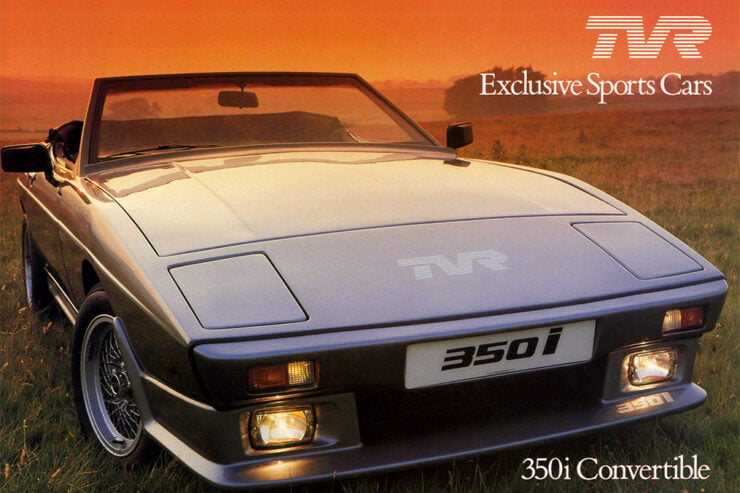 The TVR Tasmin 350i, later renamed the TVR 350i, was the first of the TVR wedges to be fitted with a V8. It would prove to be a winning combination, and all subsequent cars in the series would get one. Image courtesy of TVR.
The TVR Tasmin 350i, later renamed the TVR 350i, was the first of the TVR wedges to be fitted with a V8. It would prove to be a winning combination, and all subsequent cars in the series would get one. Image courtesy of TVR.The TVR 450SE – Special Edition
The TVR 450SE made its debut in 1989 and many believe it left production in 1990, but a handful were produced running into 1991. As noted up top, just 35 of these were made, and they represented the pinnacle of the species in many respects.
Under the hood you’ll find a 4.4 liter (4,441cc) Rover V8, this is a compact and lightweight engine originally developed by Buick in the early 1960s and it has both an alloy block and alloy heads. The smaller size and lower weight made it ideal for use in British sports cars, and many have used it over the years.
The version in the 450SE produces 320 bhp at 5,700 rpm and 310 lb ft of torque at 4,000 rpm, huge numbers for a sports car in the late 1980s, particularly one by a low-volume manufacturer. The top speed was limited to 155 mph or 249 km/h with a 0-60 mph sprint time of just 4.7 seconds, helped along by the curb weight of just 1,216 kgs (2,681 lbs).
By the end of the 1980s it was clear that wedges were on the way out, and that curves were coming back into vogue, so the days of the TVR wedge were numbered. Today they’re seeing their popularity skyrocket after a couple of decades of being generally considered less desirable – they’ve now become both vintage and stylishly retro.
The TVR 450SE Shown Here
The car you see here may very well be the last TVR 450SE that was ever made, having left the factory in mid-1991 finished in Ruby Mica paintwork with gold decals, a tan folding roof, a tan interior, and wood trim throughout.
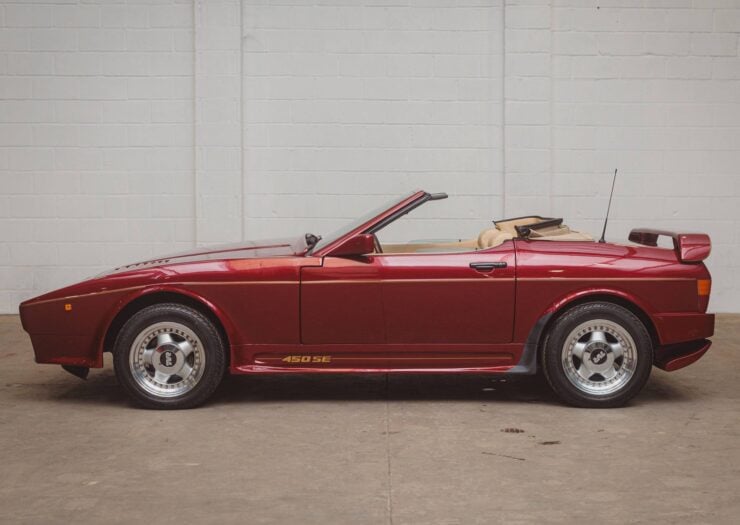 The sharp wedge styling, pop-up headlights, rear wing, and the hefty V8 under the hood all made the TVR wedges a firm favorite from their era.
The sharp wedge styling, pop-up headlights, rear wing, and the hefty V8 under the hood all made the TVR wedges a firm favorite from their era.The car still has its rear spoiler and TVR alloy wheels (made by OZ Racing) in place, and remarkably it still belongs to its original owner from 1991 who has amassed just 10,730 miles on the odometer in 33 years.
The car is now being offered for sale in true time warp condition on The Market by Bonhams, it has a recent advisory free MOT and it has a price guide of £25,000 – £30,000 or approximately $33,093 USD – 39,711 USD. If you’d like to read more about it or register to bid you can visit the listing here.
Images courtesy of The Market by Bonhams

